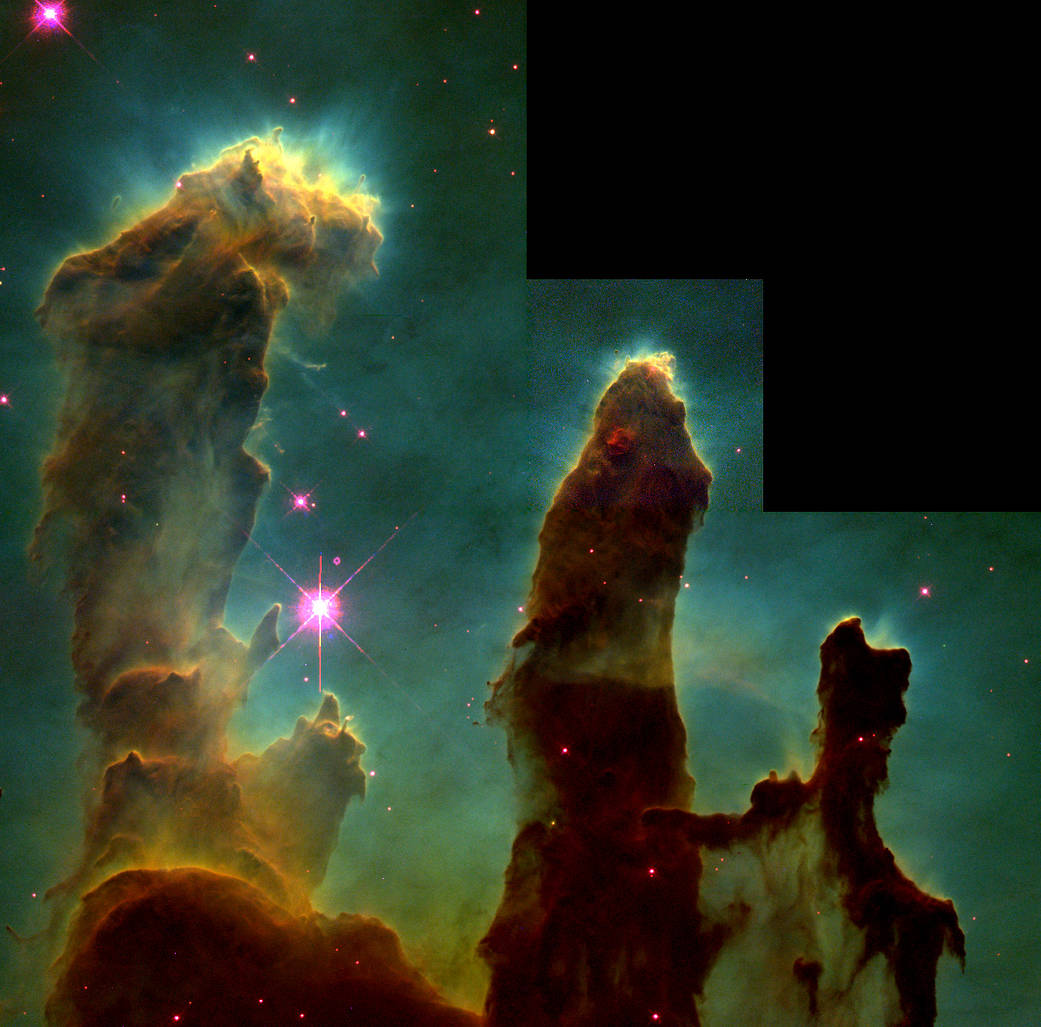
Eerie, dramatic pictures from the Hubble telescope show newborn stars emerging from “eggs” – not the barnyard variety – but rather, dense, compact pockets of interstellar gas called evaporating gaseous globules (EGGs). Hubble found the “EGGs,” appropriately enough, in the Eagle Nebula, a nearby star-forming region 7,000 light-years from Earth in the constellation Serpens.
These striking pictures resolve the EGGs at the tip of finger-like features protruding from monstrous columns of cold gas and dust. The columns – dubbed “elephant trunks” – protrude from the wall of a vast cloud of molecular hydrogen, like stalagmites rising above the floor of a cavern. Inside the gaseous towers, which are light-years long, the interstellar gas is dense enough to collapse under its own weight, forming young stars that continue to grow as they accumulate more and more mass from their surroundings.Image Credit: NASA/ESA/STScI


























